Travelling with a folding bike: the cheapest and easiest way to take a bike on trains, planes, and coaches
Want to bring your folding bike on holiday by train, plane or coach, but worried about the price and practicalities? Get past the punitive rules with our advice.


Taking a bike on holiday can be an expensive and frustrating affair, but travelling with a folding bike will circumvent most of the hassle and cost.
That said, if you’ve got a training camp or suchlike at the other end then, all in all, you will be a lot better off bringing a full-sized bike and putting up with the processes.
But if want the reap the benefits of a bike as a mode of transport - enabling you to get around quickly and cheaply whatever town or city you’ve travelled to - a folding bike presents an excellent and trouble-free way to do this.
Just how easy and how cheap it is to take a folding bike on holiday varies massively depending on the mode of transport you use. We’ll take you through some of the most common and explain how best to bring your folder.
>>> These are what we think are the best cycling holidays
Things to be aware of
If you click on some links, then we may receive a small amount of money from the retailer when you purchase the item. This doesn’t affect the amount you pay.
Size and weight
Get The Leadout Newsletter
The latest race content, interviews, features, reviews and expert buying guides, direct to your inbox!
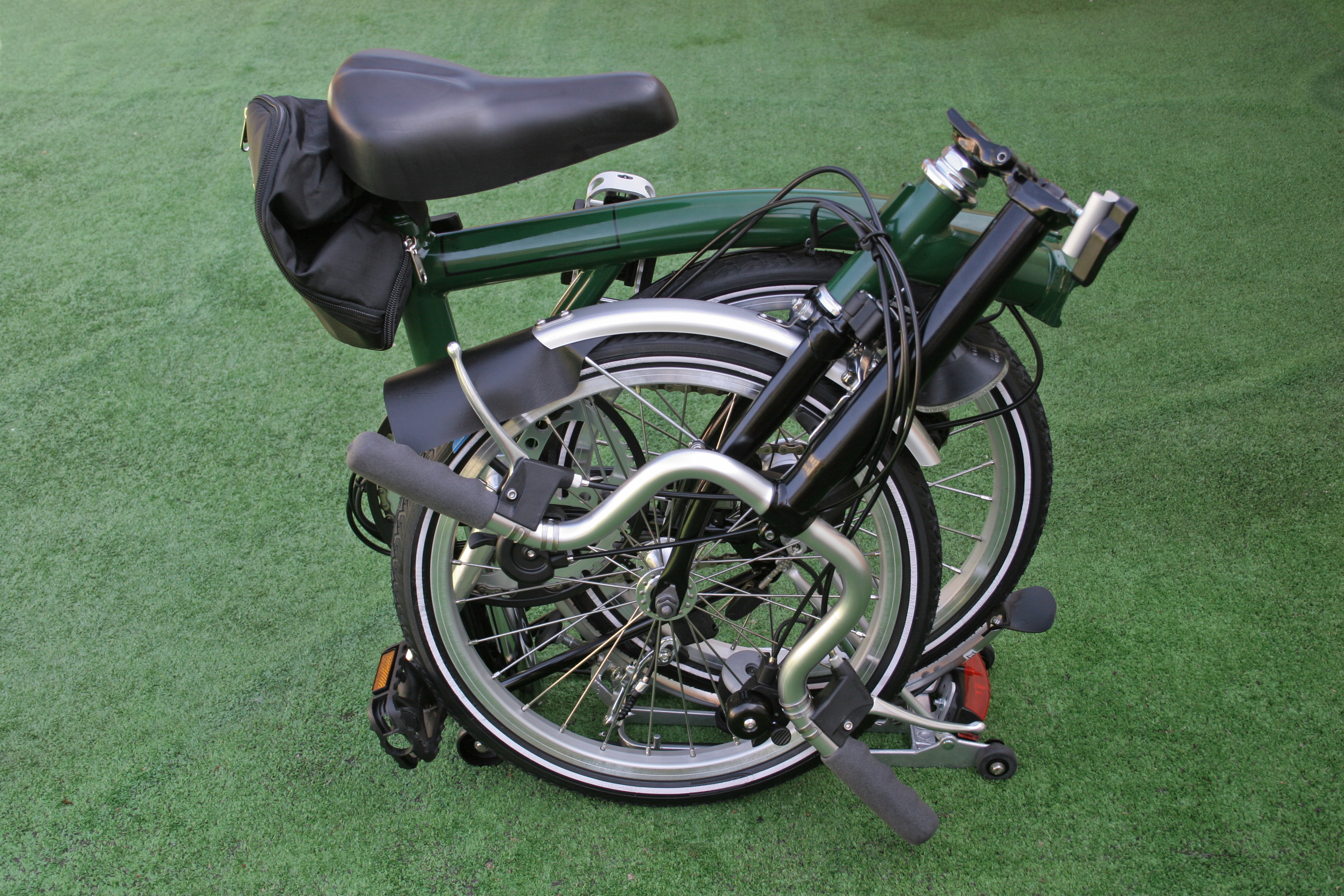
Size and weight are two important considerations for a folding bike in any circumstances. But when travelling, they become all the more so, as maximum size and weight restrictions seek to thwart your attempt to bring a bike.
Bromptons, although expensive, can be very lightweight and they fold particularly neatly, maximising the places you can take your bike (and the amount of other luggage you might want to bring). There are other folding bike brands that are similarly lightweight and compact, but it is fair to say that Bromptons are by far the most well known.
Protection and its trade offs
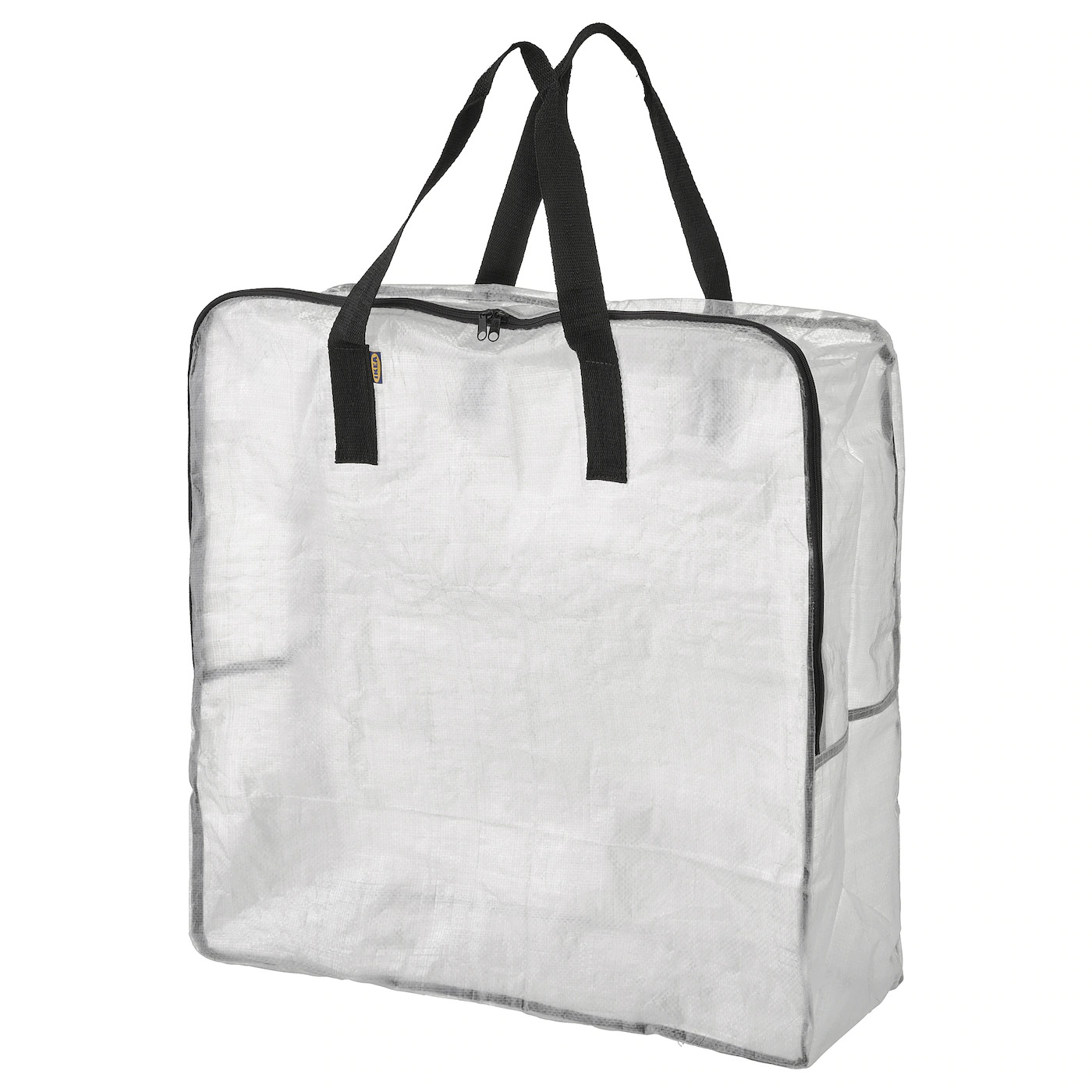
The IKEA Dimpa bag is something of a legend amongst Brompton toting travellers. It fits the bike perfectly, folds completely flat and weighs almost nothing. The best part is that they cost only £3. An easy bag to travel with, it is quite easy to get under maximum weight restrictions, and for those that require bikes to be bagged, it’s not a problem to carry one of these with you.
However, in being an incredibly lightweight and foldable bag, it doesn’t offer your bike much in the way of protection. Some people cut cardboard panels to support the sides of the bag and turn it into a kind of semi-ridged bike box.
The reason for the cardboard is not pure frugality; once you arrive at your destination you can bin the cardboard and reap the benefits of the bag’s packability. Some more cardboard just has to be sourced again at the end of your trip when you’re packing up.
>>> Is a folding bike the best campervan accessory?
For those who prefer the peace of mind a hard-shell offers against overly exuberant baggage handlers, there are purpose-built options, such as the B&W Folding Bike Hard Case. A large run-of-the-mill hard-shell suitcase will provide enhanced protection, and will give you more space to pack other items around your bike. It’s still worth picking up a Dimpa bag though, to keep your suitcase clean.
How to travel with your folding bike
Trains
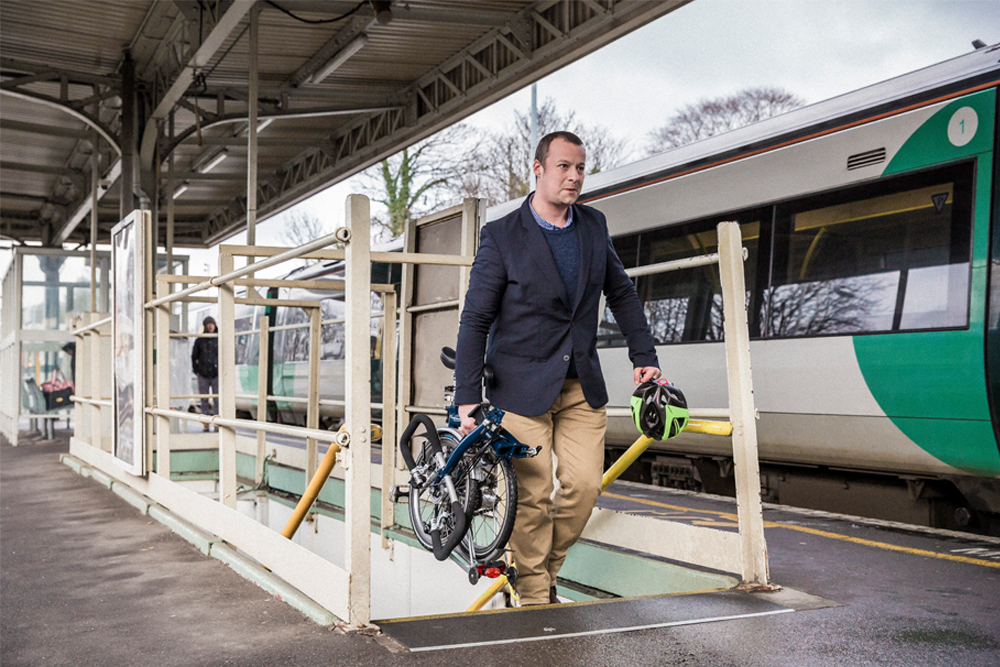
There are many different train companies with many different rules regarding bikes. From the London underground where the only bikes allowed are folding bikes, to Copenhagen’s S-tog system which has a huge amount of space for cycles - even the most cumbersome of Dutch bikes are not a problem to get in and out of the city centre.
The focus here is going to be on the most relevant services to British travellers: the UK’s regional and inter-city lines and the Eurostar. The broad principles will be applicable to all train journeys, but, as ever, always check the rules for the provider you are using.
Regional and inter-city
It is perfectly possible to take a full-sized bike on both of these and it won’t cost you a penny. Regional trains will include a passenger carriage which has been arranged to provide a shared space for people travelling with bikes and disabled passengers. On inter-city trains there is a dedicated carriage for bikes and over sized luggage, but you must book a space.
There are a number of aspects which make a folding bike a considerably easier travelling companion.
Regarding regional trains, you must be aware of when ‘peak-time’ begins and ends, as full-sized bikes are prohibited during those hours. A folding bike, meanwhile, can be taken on at any time.
Another issue for full-sized bikes is the unpredictability of whether there will actually be space for your bike on the train - it doesn’t take many bikes to fill up the small area available. If your travel plans involve tight changes, the ability of a folding bike to be stashed in any of the standard luggage spaces means that it won’t be your bike that will cost you your connection
When it comes to the long-distance trains, it is possible to book your place in the bike carriage ahead and mostly this will be fine. However, these trains also have quite a small capacity for bikes. It only takes a couple of families touring for there not to be space for your full-sized bike. A folding bike circumvents this issue the way it does for regional trains.
When travelling domestically by train, a folding bike may not offer any additional cost saving, but it does make it a simpler and more stress-free affair.
Eurostar
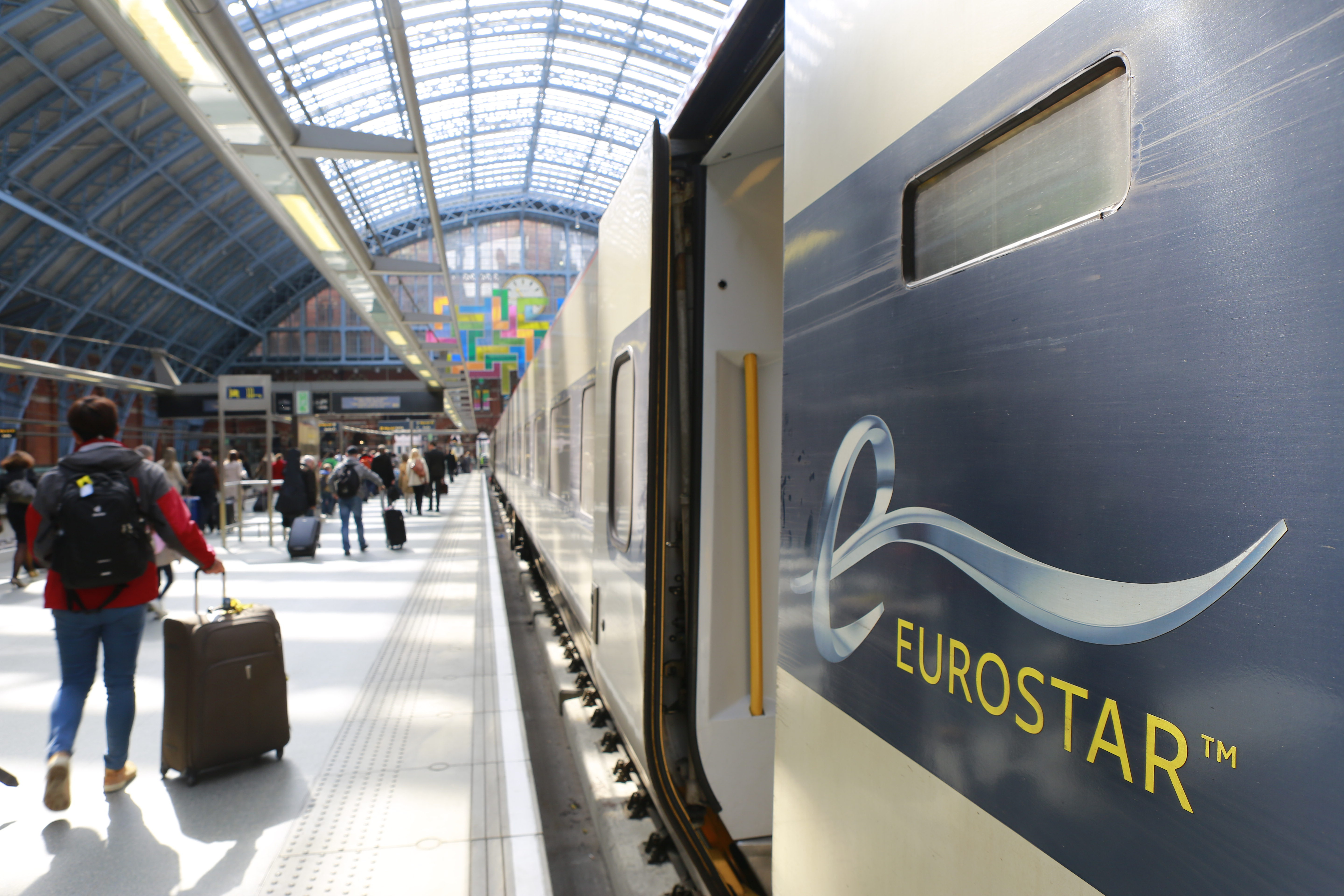
On the Eurostar, the benefits of a folding bike are considerably starker. Hand luggage is defined as being ‘up to 85cm long at its widest point’ and incurs no extra charge. A large 4-wheeled suitcase is generally around 75cm long, so you can fit your folder in its Dimpa bag and fill up the rest of the space with whatever else you want to bring.
Although Eurostar say that "you should be able carry and lift your bags safely", the best bit is that there’s no weight limit.
On the contrary, a full-sized bike will cost at least £35 - and that’s providing that you book between 120 and 180 days in advance. If you try and book a place for your full-sized bike less than 60 days in advance, you’ll have to cough up £55 for the pleasure.
Planes

Carry-on
There are those who swear by taking their folding bike as hand luggage. They suggest folding it up into an opaque bag - but do this before you get to any desk and try not to draw attention of airport employees.
Remember to place it folding pedal side down on the conveyor belt for the scanner and just take it on as carry-on, completely avoiding any additional costs. Another benefit extoled of this method is that the bike is with you at all times, so you know it is nice and safe.
But there are a few downsides with this method. One is just practical: although many people travel with only a carry-on bag, using this for your bike leaves you with only a laptop bag for everything else (assuming you don't check anything else into the hold luggage). For many, travelling this light is not viable.
Also, airports and airlines can be a little funny about Bromptons as carry on. You don’t want to have any awkward run-ins at security or say the wrong thing to a member of the airline’s staff and get slapped with a massive surcharge.
Hold luggage
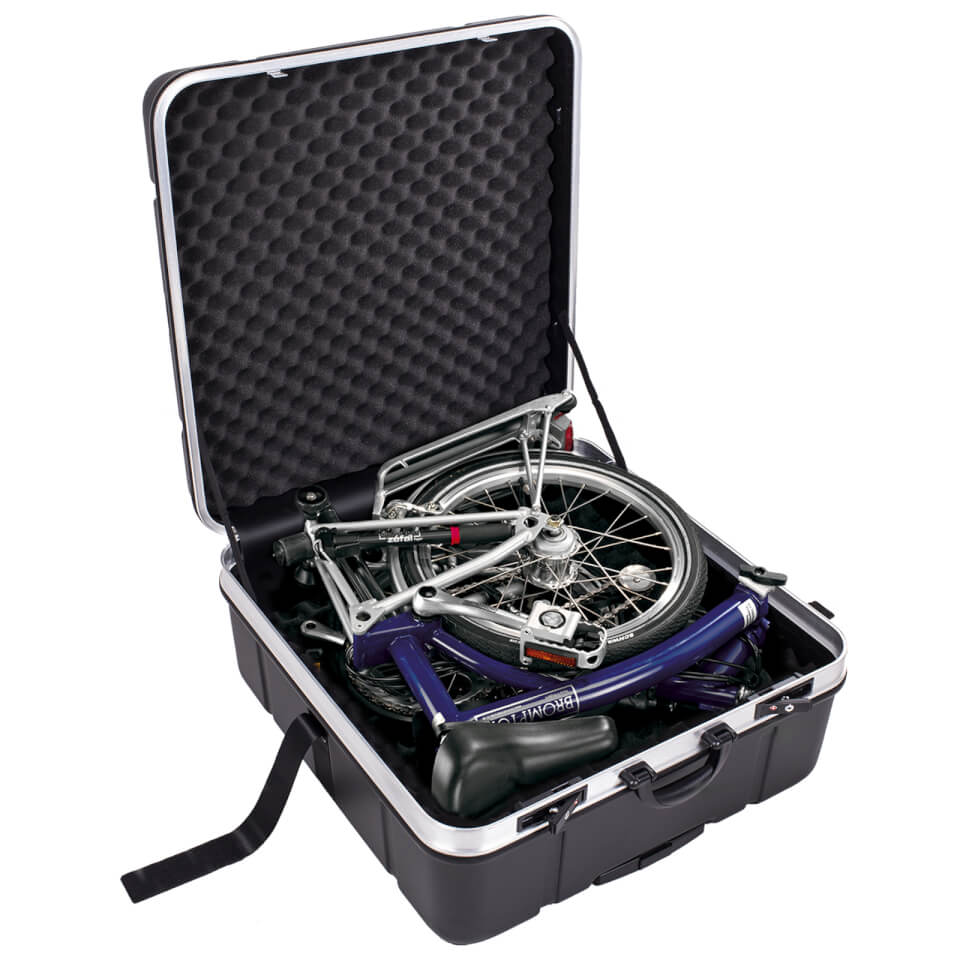
Bringing your bike as hold luggage is a better option for most people. There are two schools of thought on the best way to do this.
The first is the lightweight method. First, pack your bike into a Dimpa bag with cardboard side panels. Then, put the Dimpa bag inside a large - but lightweight and foldable - canvas bag and pack your clothes and other items around it. And there you go!
In using lightweight bags, you are maximising the amount of actual luggage you can bring. The lightweight and foldable bags make for easy transportation at the other end, allowing you to pack them away and ride your bike straight out of the airport.
The downside of this method is that your bike is less protected. Although with the cardboard, two bags, and clothes padding things out, you would have to be quite unlucky to sustain any damage.
But if you are worried about your bike’s protection, the alternative method is to use a hard-shell case, whether purpose built or run-of-the-mill. Still, we recommend that use a Dimpa bag to protect the inside of your case and pack your other luggage around it.
Although this method is safer for the bike, it does have some downsides, notably weight as the hard-shell suitcase will push you towards the upper end of the weight limit. The second is that you will have to transport a massive suitcase to wherever you are going - you can’t just cycle off from the airport.
How much cheaper it is to take a folding bike than a full-sized bike varies depending on the airline, but typically it is around £30 each way.
>>> How much does it cost to fly around the world with your bike
Coach
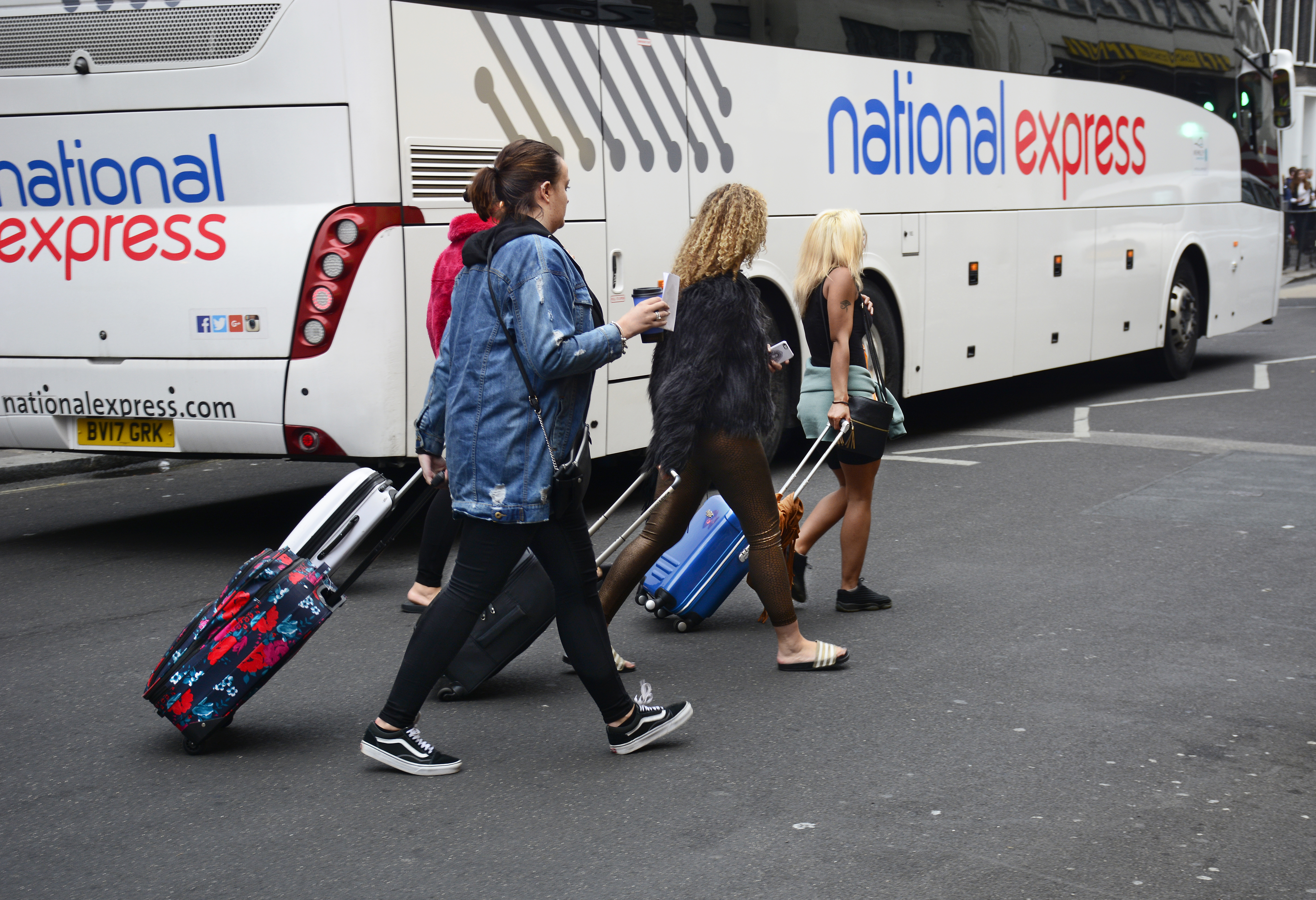
For UK coach companies the general rule is that bikes must be in a bag which is less than 75cm long and weighs less than 20kg. No extra charge is levied though, and this applies for both full-sized bike and folding bikes.
But despite the perception of parity, folding bikes are significantly more practical in this system than full-sized bikes. With a full-sized bike, you would have to disassemble it to fit in the bag/box, which is always a bit of a pain and a faff.
Then there is the bag/box. You want something with a little structure because a full-sized bike can be quite vulnerable when dissembled (especially the dropouts and derailleur hangers). But this means you now have a massive bike bag to carry with you when you get off.
>>> Best bike bags
Whereas a folding bike has no problem collapsing down and with your handy Dimpa bag, it is also easy to bag it up. The bag itself weighs nothing and packs flat. You could bring carboard inserts if you were particularly worried about your bike and bin them when you get to your destination. But if you put your bike in last and try and secure it to something immovable with some luggage straps, you shouldn’t even need to do this.
The ability to just roll up to a coach on your folding bike, pack it down and then roll off on the other side makes combining cycling and coaches a far more practical affair.

Thank you for reading 20 articles this month* Join now for unlimited access
Enjoy your first month for just £1 / $1 / €1
*Read 5 free articles per month without a subscription

Join now for unlimited access
Try first month for just £1 / $1 / €1

After winning the 2019 National Single-Speed Cross-Country Mountain Biking Championships and claiming the plushie unicorn (true story), Stefan swapped the flat-bars for drop-bars and has never looked back.
Since then, he’s earnt his 2ⁿᵈ cat racing licence in his first season racing as a third, completed the South Downs Double in under 20 hours and Everested in under 12.
But his favourite rides are multiday bikepacking trips, with all the huge amount of cycling tech and long days spent exploring new roads and trails - as well as histories and cultures. Most recently, he’s spent two weeks riding from Budapest into the mountains of Slovakia.
Height: 177cm
Weight: 67–69kg
-
 Save £42 on the same tyres that Mathieu Van de Poel won Paris-Roubaix on, this Easter weekend
Save £42 on the same tyres that Mathieu Van de Poel won Paris-Roubaix on, this Easter weekendDeals Its rare that Pirelli P-Zero Race TLR RS can be found on sale, and certainly not with a whopping 25% discount, grab a pair this weekend before they go...
By Matt Ischt-Barnard
-
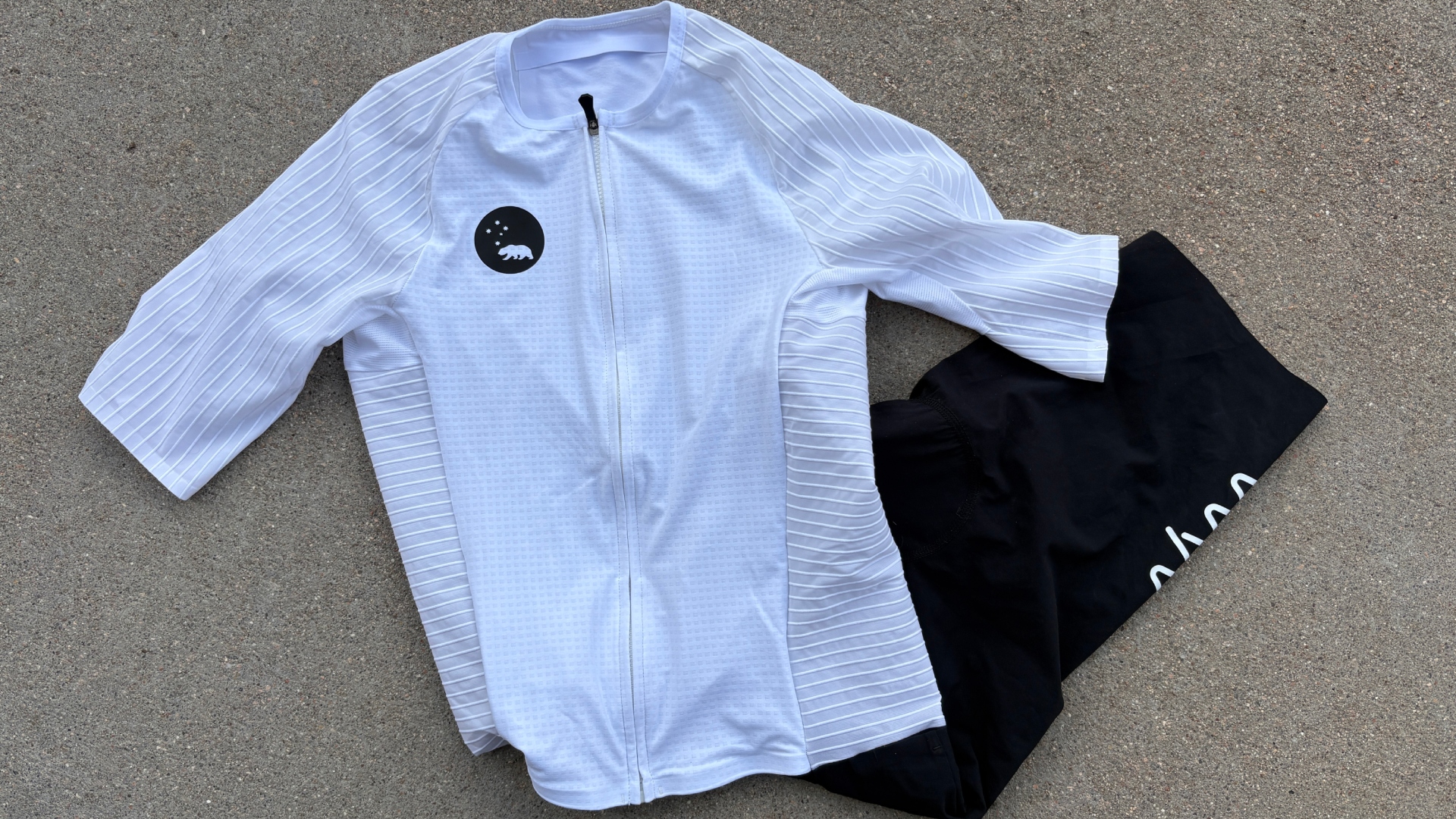 "Like a second skin” - the WYN Republic CdA triathlon suit reviewed
"Like a second skin” - the WYN Republic CdA triathlon suit reviewed$700 is a substantial investment in a Tri Suit, and it is, but you’ll definitely feel fast in it
By Kristin Jenny